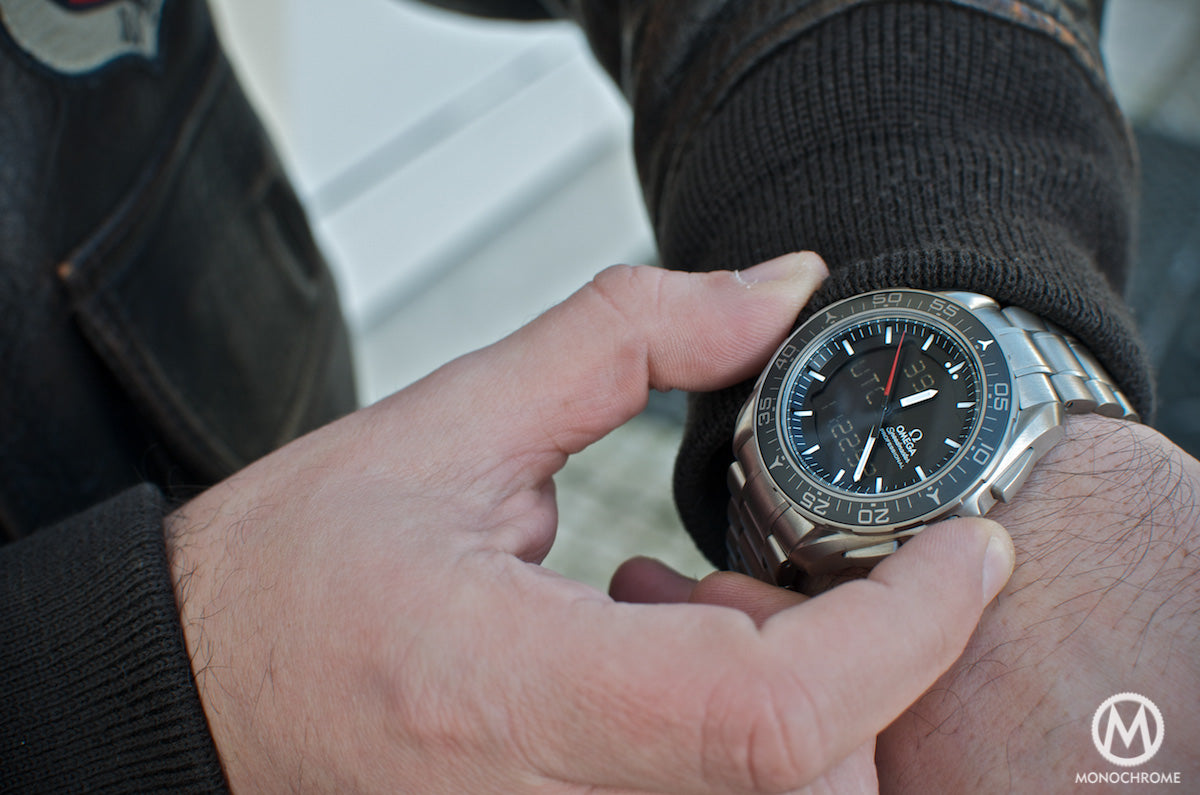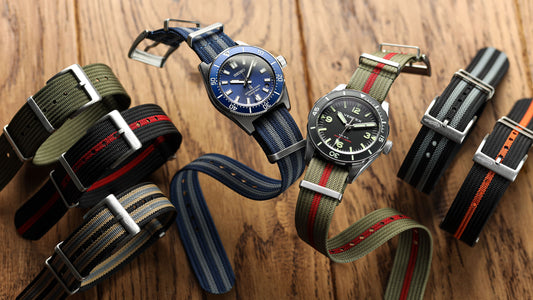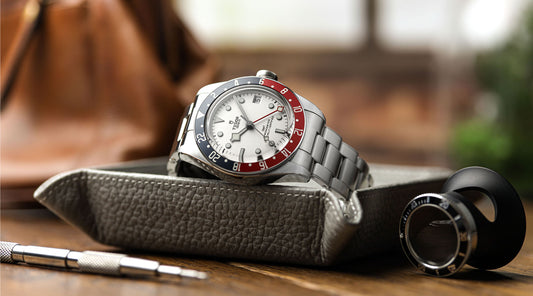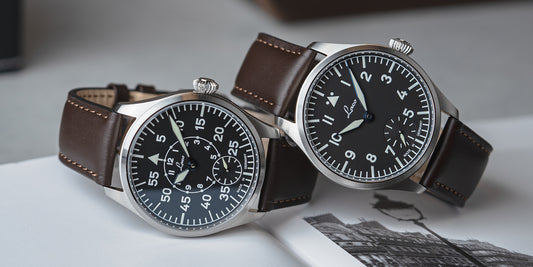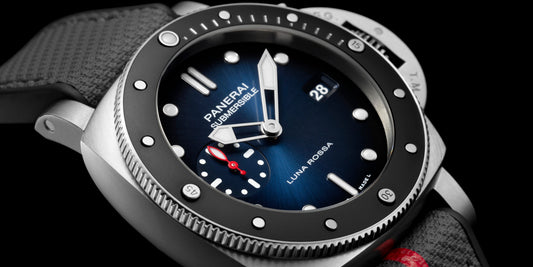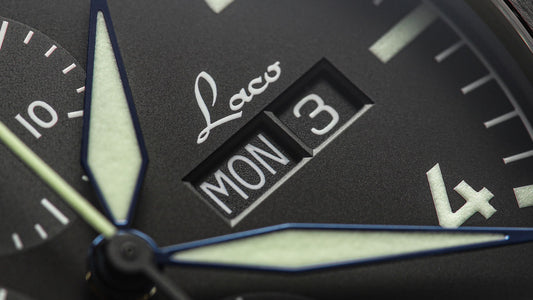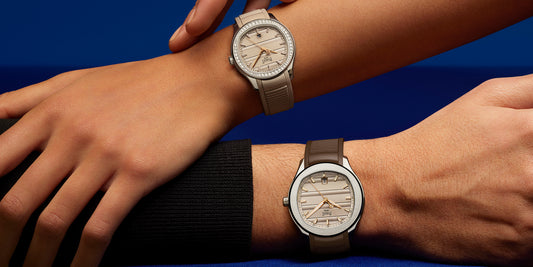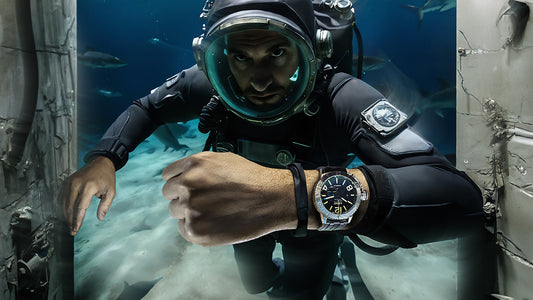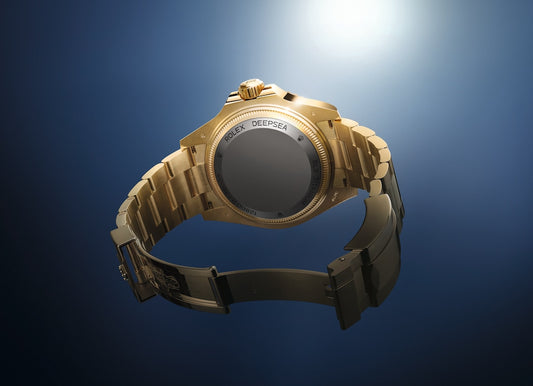Today we explore some of the lesser-known space chronometers that have explored further than most pieces...
The 50th Anniversary of Apollo 11 has come and gone and once again we were all reminded of the technical wonder of space travel and the equipment that makes it happen. A few months ago Omega released a new advert starring Apollo 16 astronaut Charlie Duke which sent us all scurrying to watch boxes to don our Speedmaster – unless like me you had worn it every day through the celebrations.
And as the buzz (no pun intended…) of space travel continues it is an interesting and timely exercise to look beyond the venerable Omega, and the Apollo 15 Bulova, and take time to analyse other watches which successfully orbited the earth in space stations, the Shuttle and continue to do so in the International Space Station (ISS).As we explored in two earlier features (26 Oct 18 and 27 Nov 18), the Omega Speedmaster was selected as the NASA issue watch for all space flight. The testing standard for the Omega was eye-watering and challenged the finest watches of the day with elite brands like Longines and Rolex failing. Only Bulova has also officially moonwalked during Apollo 15 EVA3 when a unique back-up model was deployed by Commander David Scott due to his Speedmaster breaking.
An Apollo-era Rolex on the Moon?

Ed Mitchell adjusting his Rolex GMT Master NASA [Public domain], via Wikimedia Commons
Backup watches were permitted on flights, but these should have been subjected to extensive testing as per the Omega. We do not know if the Rolex was tested but we do know that the watch was Mitchell’s own as he is seen wearing it off duty and in training and simulator film.

The Omega Speedmaster - Image Credit: WatchGecko Online Magazine
Back in the early Mercury-Atlas days of space flight there was some debate whether an automatic watch mechanism would work efficiently in zero gravity. In a watch movement that unitises the pull of gravity to work, it was a logical scientific theory that an automatic watch may not work. Some thought it would function fine due to the mass of the rotor in coordination with the movement of your wrist. Others believed that guaranteed power release and reliability was not a certainty.
When every minute detail of flight simply had to work, and nothing could be left to chance, the decision was made to go with a manual wind watch which, based on Mercury experience and extensive testing, lead to the Speedmaster being officially deployed on Gemini and Apollo.

The Rolex GMT Master - Image Credit: WatchGecko Online Magazine
Ed Mitchell however believed that an automatic watch would work in Zero-G and took his GMT Master on Apollo 14 as his back-up to prove that point. For the launch the watch was inaccessible on the inner sleeve of his suit, covered by his gloves, but when the A7L was removed for the journey to Fra Mauro highlands his Rolex could be assessed - and it worked perfectly during the three days of weightlessness to the moon. Although it was never seen on his wrist during an EVA, when asked in a later interview Ed Mitchell confessed that he did wear his GMT on the surface of the moon during one EVA. The watch cannot be seen in any Apollo 14 EVA footage therefore we must assume it was under the outer layer of his suit. And of course if that was the case the watch could never be accessed as the suit would immediately depressurise if he removed his glove, but Mitchell never denied that he wore his Rolex during a moonwalk.
When we analyse the history of watches in space it is easy to become focused on the moonwalker Omegas which are synonymous with nearly all of the timeless images, but many other brands have ventured beyond the Earth’s atmosphere. On the Skylab and MIR space stations, on the Space Shuttle and currently orbiting on the International Space Station have been, and still are, a wide range of fascinating timepieces.
SKYLAB and MIR – 1970s to the 1990s

NASA (Crew of Skylab 4. [Public domain], via Wikimedia Commons
The crews of both stations carried out groundbreaking scientific experiments and conducted countless spacewalks to maintain the exterior of the stations. And in both these stations we saw crew deploy now famous and unique watches for missions.
The “Pogue”

William Pogue during SkyLab 4 Recovery - NASA [Public domain], via Wikimedia Commons
However thanks to NASA’s decision to create the world’s first habitable space station Pogue finally made it into orbit and became a NASA legend as a member of the Skylab crew who performed the longest space flight of 84 days in the floating laboratory from 1973 into 1974; a record which remained unbroken until crew occupied the ISS in 2000. He also conducted cumulatively over 13 hours of EVAs to facilitate repairs on the outside of Skylab.
And throughout his mission, Pogue wore a now-legendary watch. So famous that it bears his name - The Seiko 6139 “Pogue”.
This is by far the most unusual watch to be known primarily for its time in space. It is by any definition a garish 1970s chronograph watch which has bold primary colours and was unofficially the first automatic chronograph in space. The 6139 was Pogue’s own watch, never approved by NASA, and while he was issued with the ubiquitous Government Speedmaster he opted often to wear his own Seiko and it can be seen in some footage and images of the Colonel in Skylab.
Seiko Pogues have now become very collectible but surprisingly do not sell for eye watering amounts – an excellent 1970s model can be found sub-£1000.
Technically it is an unusual watch. Some schools of thought claim it was the first serial production automatic chronograph; others beg to differ citing a Zenith having that particular accolade. The true NASA Pogue always has the sunburst yellow face and the Pepsi bezel. The model also came in silver and blue but as these models never went to Skylab they are not as collectable. All 6139s have a separate rotating inner bezel which is controlled by the crown and a Tachymeter on the fixed outer bezel. As most of the Apollo astronauts were test pilots it is hardly surprising that such a machine would gravitate to space –in 1973 it was one of the better pilot watches available.I used to own a Pogue but eventually sold it to a collector in the USA as I could never quite relate to the 70s vibe. From the perspective of collectors of space watches the Pogue will always be desirable – perhaps just an acquired taste.
When the Russian space program required a watch to be standard issue it was hardly surprising that it veered away from the proven US issued equipment (although in reality quite a few Cosmonauts did wear Speedmasters). Russian space issue kit was akin to their military equipment. It is generally utilitarian in appearance and design, bordering on ugly, but it tends to work well – for a limited period of time. There is a distinctly “budget” feel to the equipment although I would have to concede that whilst the Soyuz rocket does not have the sleek lines of a Saturn V it does have an appealing 1950s Buck Rogers look.
And thank goodness Russia had the Soyuz or we would never have been able to travel to the ISS in recent years.

The Fortis B-42 Official - Image Credit: Monochrome Watches
When Uri Gagarin became the first man in space in 1961 it is widely agreed he wore a Sturmanski watch –a low end military-style Russian model. The concept of having equipment specifically designed for space flight was relatively new and early astronauts made do with untested timekeepers. So, when a watch was on the horizon for the new Glasnost era Russian Space Program it was generally accepted that it would be a locally made, low tech, model. Not the case, the Russians selected the Swiss Fortis B42 Cosmonaut Chronograph.

The Fortis B-42 Official - Image Credit: Monochrome Watches
The B-42 Official comes equipped with the bulletproof Valjoux 7750 automatic movement as well as Incabloc shock protection and water resistance to 200m. Testing was extreme for the watch and the original test models are kept with great reverence at the Fortis factory in Grenchen. In order to be selected specimens were subjected to 13G and speeds of over 3000 meters per second inside a Maxus Rocket. These models were retrieved after they reached orbit and then returned to Earth – part of which required a 10 minute freefall.
The Force is strong – Omega goes digital!

The Omega Speedmaster X-33 - Image Credit: Monochrome Watches
Whilst digital watches may lack the glamour of the early Apollo Speedys and will seldom be seen as iconic, they have certainly made their way into orbit. One of those watches actually carries the same name and model as the moon watch but it has always been seen as a “love it or hate it” watch in the Omega range – the X-33 Speedmaster Skywalker. It represents a typical piece of late 1990s innovation where analogue was old hat, and everything went digital.
Many saw it as an aberration of the Speedmaster name but the watch has stood the test of time and in its latest incarnation it has been officially selected by the European Space Agency (ESA) for manned space flight and was famously seen on the wrist of Tim Peak when he called the ISS home for six months. The push to make the original X-33 did have some kudos as Tom Stafford (ex-Apollo 10 astronaut) sat on Omega’s board at the time of conception.
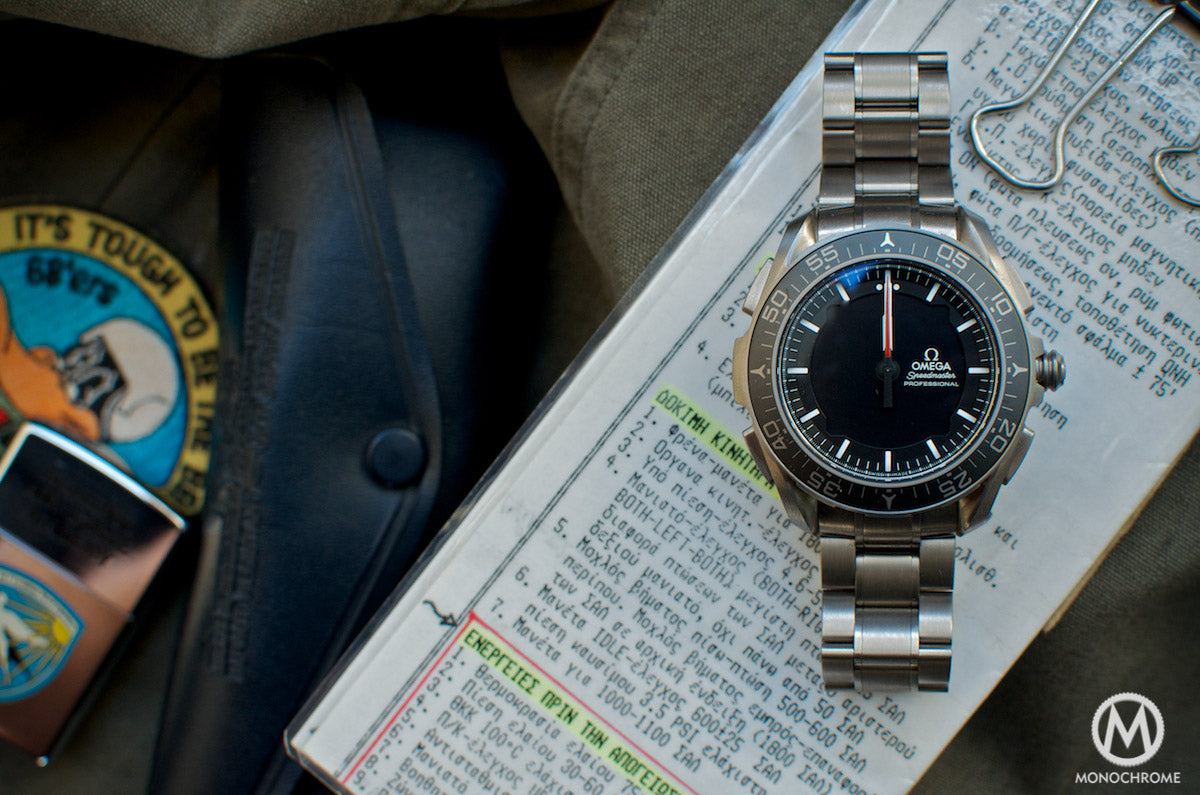
The Omega Speedmaster X-33 - Image Credit: Monochrome Watches
The watch falls roughly into the same bracket as the Breitling Aerospace. It offers a very advanced quartz heart powering an analogue/digital face with numerous functions all controlled from a smart crown. In its first generation, it was not the most attractive watch and the digital face behind the analogue hands really did look very 1990s with old tech blocky numbers. Most bizarrely the text was circular following the shape of the watch face which made reading it rather hard and not intuitive. Now in its third generation, the X-33 is a far more appealing model with linear text which is beautifully backlit in green and has a spacesuit friendly touch crown for all features.
The most useful functions of the current X-33 to an astronaut are the programs which allows the measurement of Phased Elapsed Time (PET) and Mission Elapsed Time (MET). MET is, as the name implies, the time since the commencement of a mission; perhaps the entire flight or just an EVA. The MET stopwatch on the X33 is unique in that it can run into days, not hours, therefore is suitable for prolonged time measurement. PET is the time to a predetermined event and/or the time since that event occurred which can also be defined as negative and positive time. Not much use to mere mortals, but exceptionally useful when spacewalking outside the ISS to measure egress and ingress times points and the critical time allocated to external jobs due to the limited survival equipment an astronaut can carry.
You may be surprised how many other watches have reached orbit. Some are personal models, and some were issued only once as providers wanted to have their products tested in space. Highlights run from the outstanding Casio G-Shock G-9000 Mudman to a special space edition of the efficient Sinn 140 worn by German astronaut Reinhard Furrer. Both these watches have been certified by NASA as suitable for space flight due to their impressive abilities to resist shock and G-forces. And both can be seen in images of astronauts on various Space Shuttle missions.
Any watch that survives space flight demands a degree of respect – remember that Scott Carpenters famous Breitling Navitimer did not survive its Aurora 7 flight, and most of us would consider that a well-made watch. But it was just not designed to cope with the extremes of a space mission.
I have huge affection for my Omega Speedmaster and wore it proudly on a reproduction NASA strap to see Apollo 11 at the cinema. I also love my Bulova Apollo 15 chronometer and the unique part in the exploration of the moon it represents.
But having looked at the X-33 in more detail I am sure I could find a use for PET in the Derbyshire Dales (!) and have concluded that the watch is a fascinating timepiece which possibly represents the greatest evolution of the space watch. The Gen 1 may appear a little ungainly, but I feel sure that the latest Gen 3 is a clever watch and truly reflects the ethos of modern space travel and exploration. The human reach for the stars and beyond is about advancement and new technology, not looking backwards, and whilst we can never detract from the iconic analogue Moon watch and its part in history the latest incarnation of the Omega X-33 Speedmaster Skywalker must be the ultimate space watch.When we embark on the next great journey, to set foot on Mars, I predict that the Skywalker will be part of that adventure.




